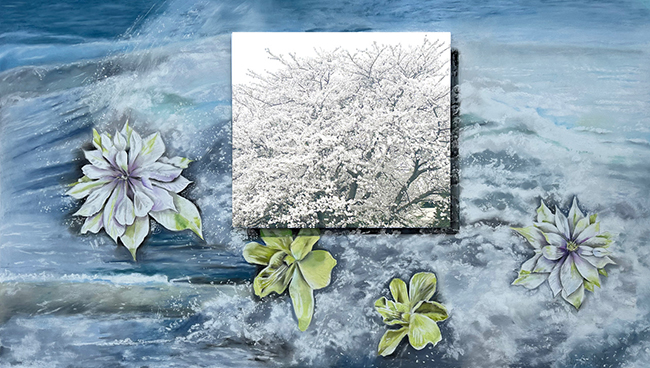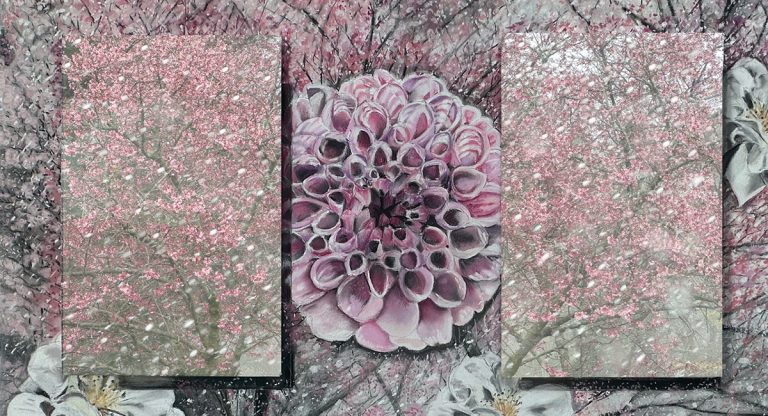Nancy Staub Laughlin approaches art with a steady hand and a wide lens. A pastel artist and photographer based in the United States, she studied at Moore College of Art in Philadelphia, earning a BFA before going on to exhibit her work in galleries and museums up and down the East Coast. Her artwork has caught the attention of both collectors and critics, with pieces entering private and corporate collections. She’s also been featured in media profiles and interviews. The late Sam Hunter, one of modern art’s most respected historians and critics, once described her work as “refreshingly unique.” That line continues to resonate.
Laughlin doesn’t isolate her mediums. She fuses them. Her process involves creating a photograph—often from her own garden or surrounding landscapes—and then building a pastel composition around it. These aren’t collages, but complete visual worlds with their own tone and temperature. Her work is structured but never stiff, layered but never overwhelming. There’s a generosity in the way she brings elements together. She lays them out carefully, but leaves room for the viewer to take their own path through it.

One of her works, “The Anticipation of Spring Allure” (22 x 58 inches), brings winter and spring into quiet conversation. At its center is a photo of a dahlia, captured from her own garden. Laughlin sprayed it with water under sunlight, catching the glint and blur of droplets to create a kind of soft snowstorm effect. That photo is then framed by a pastel drawing—a winter scene offset by peach-colored zinnias. The piece holds two seasons at once. Spring is leaning in, but winter hasn’t left. That tension, the overlapping of time and atmosphere, is what gives the work its pull.
Her imagery doesn’t rush or shout. Instead, it lingers in the in-between. She’s drawn to light—how it bends, scatters, reflects. You get the sense she’s watching the world not for its drama, but for its transitions. What matters is how things become.

“The Blossoming of Froth” (31 x 55 inches) continues this thread. Here, the meeting of sea and land becomes something dreamlike. Ocean spray morphs into flowering branches. Sea foam turns lush. The piece doesn’t ask to be read literally. It invites you into a soft, imagined moment where two different forces—the rush of waves and the bloom of spring—flow together. It’s not a fantasy, but a heightened version of something real. A mood more than a statement.
Color plays a central role in her work, but never in an overpowering way. Her palette leans toward calm tones—pastels used not only as a medium, but as a visual attitude. The effect is immersive. You want to stay in the scene a while. There’s detail, but no clutter. The images breathe.

In “The Transition to Spring” (24 x 33 inches), Laughlin again uses both pastel and photography to draw the viewer into what she calls her world of “color, light, dimension, and beauty.” Her process is slow and considered. She doesn’t begin with a random image. She builds toward an outcome, working through layers until each part fits into place. It’s less about recording reality and more about shaping an experience.
Her work lives in that middle ground between nature and imagination, precision and softness. The result is a visual language that feels calm, deliberate, and open. She’s not using art to provoke or dazzle. She’s using it to hold a moment still and let you see what’s usually passed by.
Laughlin’s work stands apart because of its tone. She’s not chasing trends, and her compositions don’t feel like they’re trying to prove something. Instead, they’re offering a space to pause. A mix of the natural and the composed. A sense of transition and time. Her voice, though quiet, is clear—and that’s what makes her art stay with you.

